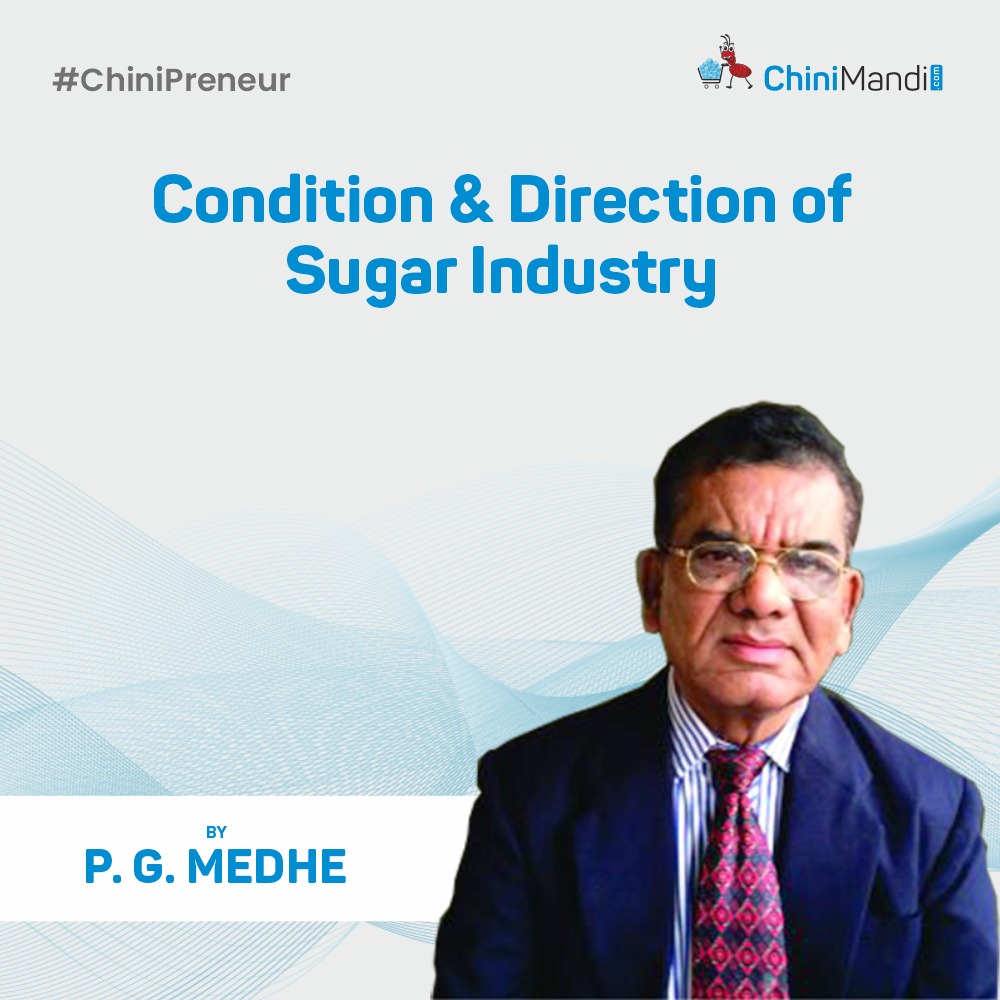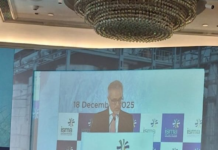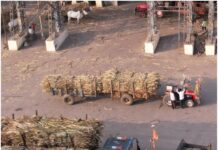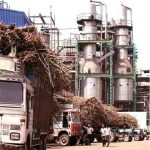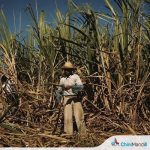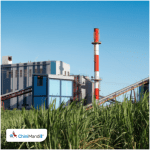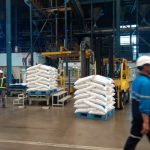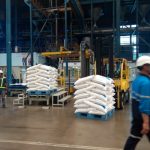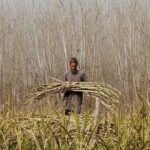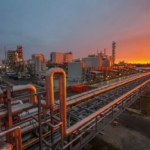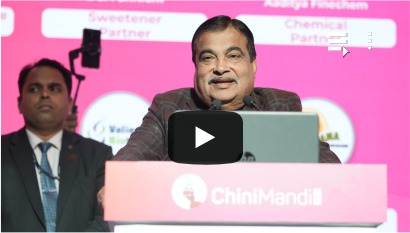India’s sugar sector, a rural economic backbone, is under growing financial strain despite the government’s robust support for ethanol blending, FRP revision, and agricultural subsidies. Sugar factories are buckling under rising costs and stagnant prices, while cane cultivators are burdened by increasing input expenses and climatic uncertainties. The time has come for a transformative policy shift—a Dual Sugar Price Policy coupled with productivity-linked farmer incentives—to ensure sustainable growth for this vital sector.
I. Why a Dual Sugar Price Policy Is Essential –
At present, sugar is sold uniformly across the board, whether for household consumption or industrial use. This outdated pricing model has led to massive profit margins—often exceeding 200–300%—for industrial consumers who form over 70% of the total sugar demand.
Consider this example:
A high-end sweet costs ₹600/kg, with nearly 40–50% of its composition being sugar. The actual sugar cost for the manufacturer? Just ₹20–25/kg. The remaining value is captured as industrial profit, while sugar factories struggle to break even and farmers face delayed payments.
Meanwhile, the Minimum Selling Price (MSP) of sugar remains frozen at ₹3,100/quintal, even as the Fair and Remunerative Price (FRP) for sugarcane has risen to ₹3,550/MT. This growing mismatch has resulted in heavy losses and working capital stress for mills across the country.
II. The Dual Sugar Price Model: A Win-Win Framework –
To address this imbalance, a Dual Sugar Price Policy is proposed, aligned with market realities and similar in design to the successful dual pricing of LPG (domestic vs. commercial gas):
Category Share Proposed Price :
Household Consumption 30% ₹35/-kg
Industrial Consumption 70% ₹60/kg
This pricing structure can :
Allow sugar mills to recover production costs and generate surplus for farmer payments.
Prevent industrial profiteering at the cost of primary producers.
Generate funds for cane development, ethanol production, and green technology adoption.
III. Practical Steps for Execution –
To ensure the effectiveness and integrity of the dual pricing system, a strong administrative and logistical framework must be put in place:
Distribution Monitoring through FCI and District Supply Offices:
*Household sugar (at ₹35/-kg) to be channelled through the Food Corporation of India (FCI), State Civil Supplies Departments, and registered retail outlets.
*Monthly district-wise quotas can be fixed based on household consumption data.
*Packaging Differentiation to Prevent Diversion:
*Different grain size or texture for industrial vs. household sugar (e.g., fine vs. coarse).
*Distinct colour-coded bags—e.g., white for domestic, yellow for industrial use—with QR code tracking.
Legal Amendments & Enforcement:
*Amend Essential Commodities Act and relevant sugar control orders to include clear penalties for diversion or resale of household sugar in the industrial market.
*A special enforcement wing under the Sugar Commissioner or Food Department may be notified for inspections and audits.
Digitised Transaction Tracking:
*All industrial buyers to be registered and required to report monthly sugar procurement and usage via a digital portal, similar to ethanol procurement through OMCs.
*A reverse audit mechanism can identify discrepancies in sugar utilisation.
Stakeholder Engagement: Sugar mills, traders, bulk consumers, and state departments must be sensitised through workshops and digital campaigns on the objectives and mechanics of the policy.
IV) Supporting the Poor: Continuing Subsidised Sugar for BPL Families
It is equally important to reaffirm the government’s commitment to food security and inclusive welfare. Under the current system, the Government of India procures sugar at market rates from sugar mills for distribution to Below Poverty Line (BPL) families through the Public Distribution System (PDS).
This practice can and should continue under the Dual Sugar Price Policy framework:
The government may continue purchasing sugar for BPL distribution at ₹40/kg directly from mills, ensuring that the poorest households continue to receive essential support.
This will help sugar mills sustain operations by providing stable off-take at a fair price, while the government fulfills its welfare obligations.
No subsidy burden increases, as this price aligns with the proposed domestic category under the dual pricing mechanism.
This model creates a self-sustaining subsidy framework, where affordability for the poor and economic viability for the industry coexist without compromising fiscal discipline.
V) CACP ENDORSEMENT: Dual Pricing as the Only Sustainable Solution –
The Commission for Agricultural Costs and Prices (CACP)—India’s premier advisory body on pricing policy—has unequivocally stated in its recent reports that the only sustainable and long-term solution to the persistent financial stress in the sugar industry is the adoption of a Dual Sugar Pricing Policy. According to CACP, unless a structural reform is introduced to differentiate sugar prices for household and industrial consumption, the industry will continue to face cyclical crises due to volatile markets, policy delays, and rising input costs.
Historically, the sugar industry has required repeated government interventions in the form of export subsidies, buffer stock creation, soft loans, and interest subvention schemes. These measures, while helpful in the short term, do not address the core structural imbalance. As per CACP’s analysis, once a Dual Sugar Price Policy is implemented, the industry will be able to generate sufficient internal surplus to manage its operations, pay farmers on time, and invest in forward-linkage industries like ethanol—eliminating the need for financial assistance from the government.
Thus, this policy not only aligns with market realities and fiscal prudence but also provides a permanent framework for industrial profitability and farmer welfare. It is a solution that the sugar industry and policymakers must now adopt as a matter of urgent national priority.
VI) EMPOWERING FARMERS: ₹1,000/MT Incentive for Productivity (Fixing particular period) –
Reducing the cost of cane production and enhancing per-hectare yield is critical. A targeted ₹1,000 per tonne incentive can be provided directly to farmers via DBT, split as:
Component Incentive
A) High-Yield Cane Varieties ₹200
B) Drip Irrigation ₹200
C) Use of AI, Satellite Monitoring ₹200
D) Performance-Based Incentives ₹200
This scheme can help push yields from 70 T/ha to over 100 T/ha, reduce input costs, and encourage climate-smart farming practices.
VII) Strategic Impact: Ethanol, Forex, Exports –
Higher cane availability will enable greater ethanol production, supporting India’s E20 even more than that, blending targets while saving billions in foreign exchange on crude oil imports. With sufficient surplus, India can even emerge as a net exporter of ethanol, leveraging global demand for clean fuels.
VIII) However, ethanol pricing needs urgent revision too –
*Ethanol from B-heavy molasses: ₹60.73/litre
*Ethanol from sugarcane juice: ₹65.61/litre
These rates are not aligned with rising FRP and input costs, making ethanol production from cane juice/syrup economically unsustainable without intervention.
FROM CRISIS TO OPPORTUNITY:
The sugar industry is at a policy crossroads. The proposed Dual Sugar Price Policy, supported by robust farmer incentives and ethanol pricing reforms, can lift the sector from financial distress to future-ready sustainability. It’s time to shift from a volume-driven model to a value-driven ecosystem—one that empowers farmers, sustains factories, conserves water, promotes clean energy, and strengthens India’s rural economy. With the continued guidance of the Hon’ble Prime Minister Shri Narendra Modi ji and proactive policymaking, India can transform its sugar sector into a global leader in innovation, sustainability, and rural prosperity.
P.G. Medhe is the former Managing Director of Shri Chhatrapati Rajaram Sahakari Sakhar Karkhana Ltd and sugar industry analyst. He can be contacted at +91 9822329898.

